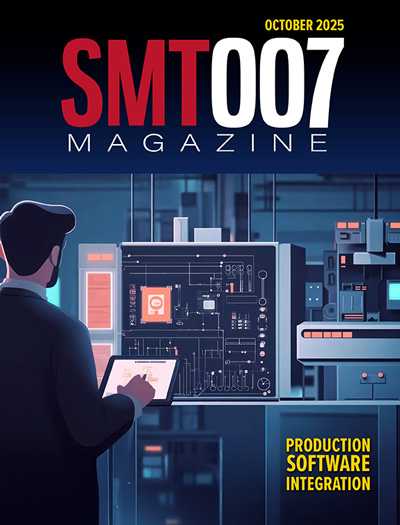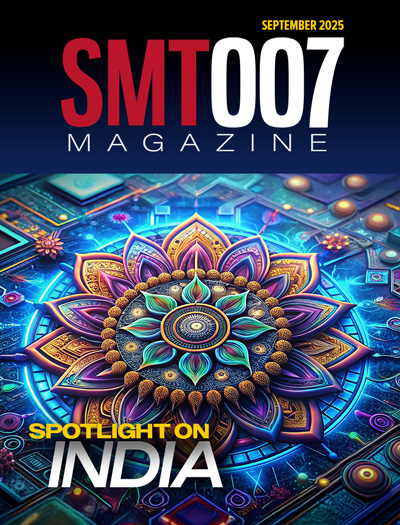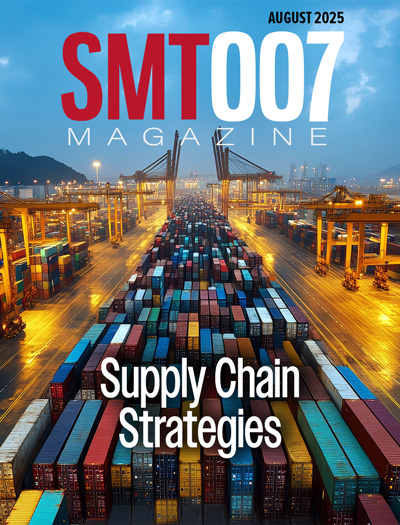-

- News
- Books
Featured Books
- smt007 Magazine
Latest Issues
Current Issue
Production Software Integration
EMS companies need advanced software systems to thrive and compete. But these systems require significant effort to integrate and deploy. What is the reality, and how can we make it easier for everyone?

Spotlight on India
We invite you on a virtual tour of India’s thriving ecosystem, guided by the Global Electronics Association’s India office staff, who share their insights into the region’s growth and opportunities.

Supply Chain Strategies
A successful brand is built on strong customer relationships—anchored by a well-orchestrated supply chain at its core. This month, we look at how managing your supply chain directly influences customer perception.
- Articles
- Columns
- Links
- Media kit
||| MENU - smt007 Magazine
Seeed Fusion Sponsors Makers with New $1 PCB Manufacturing Offer
August 23, 2018 | Seeed FusionEstimated reading time: 1 minute
Seeed Studio's Fusion service has been providing Chinese electronics manufacturing services to customers worldwide for over ten years. With foundations in the maker community, Seeed understands the movement's needs well and is devoted to supporting their projects.
This time, Fusion is giving away a new package designed for makers. At just $1, customers can get three pieces of up to two-layer PCBs within 100x100mm with a choice of colors and thicknesses. The quality is exactly the same and, since the quantity is lower, shipping prices are cheaper.
This unique package, available only at Seeed Fusion, is ideal for makers who often only need a few pieces compared to the typical 10 or 5 pieces, or for individuals who just want to try out the service.
Seeed Fusion provides hardware manufacturing services including PCB fabrication, PCB assembly, PCB layout, 3D printing, CNC milling and more. As the star service, Seeed Fusion's PCB service caters for boards from 3 to 8000 pieces, 1 to 30 layers, 1oz to 6oz copper weights and various materials and advanced features, all at competitive prices. Get an instant quote online from the website directly with as low as two days production time.
Seeed Fusion's PCB assembly service covers PCB manufacture, in-house assembly and parts procurement in one package. The service features an online BOM reader and calculator that can provide the full quote in seconds. Components can be procured from major distributors such as DigiKey and Mouser, or customers can select from 800 locally sourced parts from Seeed's open parts library (OPL). These parts are cheaper or completely free with PCBA orders and can reduce the total lead time to 15 business days from order confirmation, compared to 25 days if parts are sourced externally.
Seeed's Fusion service prides in being close to its customers and listening to their needs to effectively improve the service. This promotion is yet another example of Seeed Fusion giving customers what they want and is only one of many developments in the works.
Testimonial
"In a year when every marketing dollar mattered, I chose to keep I-Connect007 in our 2025 plan. Their commitment to high-quality, insightful content aligns with Koh Young’s values and helps readers navigate a changing industry. "
Brent Fischthal - Koh YoungSuggested Items
Nolan’s Notes: Tariffs, Technologies, and Optimization
10/01/2025 | Nolan Johnson -- Column: Nolan's NotesLast month, SMT007 Magazine spotlighted India, and boy, did we pick a good time to do so. Tariff and trade news involving India was breaking like a storm surge. The U.S. tariffs shifted India from one of the most favorable trade agreements to the least favorable. Electronics continue to be exempt for the time being, but lest you think that we’re free and clear because we manufacture electronics, steel and aluminum are specifically called out at the 50% tariff levels.
MacDermid Alpha & Graphic PLC Lead UK’s First Horizontal Electroless Copper Installation
09/30/2025 | MacDermid Alpha & Graphic PLCMacDermid Alpha Electronics Solutions, a leading supplier of integrated materials and chemistries to the electronics industry, is proud to support Graphic PLC, a Somacis company, with the installation of the first horizontal electroless copper metallization process in the UK.
Electrodeposited Copper Foils Market to Grow by $11.7 Billion Over 2025-2032
09/18/2025 | Globe NewswireThe global electrodeposited copper foils market is poised for dynamic growth, driven by the rising adoption in advanced electronics and renewable energy storage solutions.
MacDermid Alpha Showcases Advanced Interconnect Solutions at PCIM Asia 2025
09/18/2025 | MacDermid Alpha Electronics SolutionsMacDermid Alpha Electronic Solutions, a global leader in materials for power electronics and semiconductor assembly, will showcase its latest interconnect innovations in electronic interconnect materials at PCIM Asia 2025, held from September 24 to 26 at the Shanghai New International Expo Centre, Booth N5-E30
Trouble in Your Tank: Implementing Direct Metallization in Advanced Substrate Packaging
09/15/2025 | Michael Carano -- Column: Trouble in Your TankDirect metallization systems based on conductive graphite are gaining popularity throughout the world. The environmental and productivity gains achievable with this process are outstanding. Direct metallization reduces the costs of compliance, waste treatment, and legal issues related to chemical exposure. A graphite-based direct plate system has been devised to address these needs.


